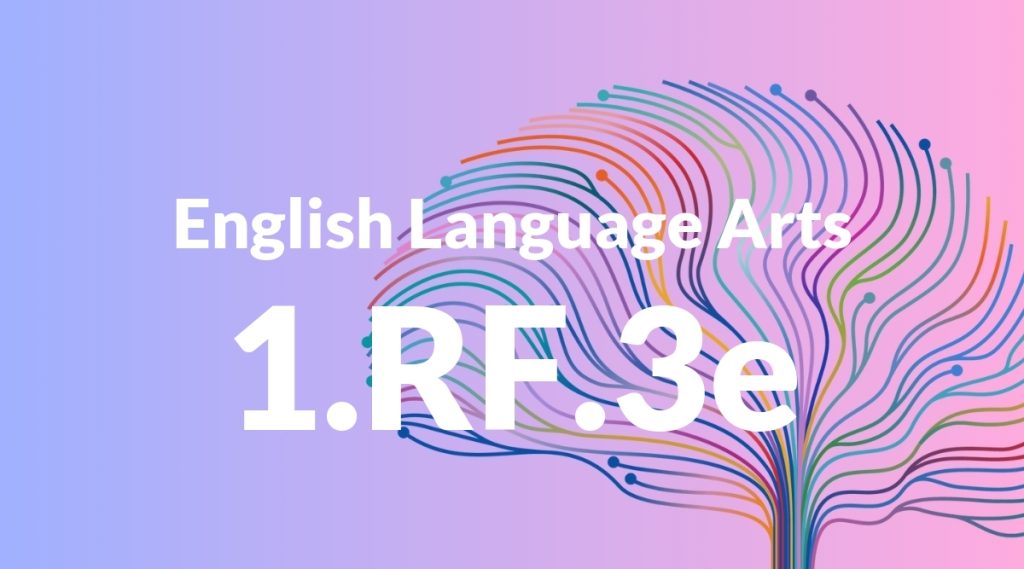Standard: 1.RF.3e – Decode two-syllable words following basic patterns by breaking the words into syllables.
Grade level: Grade 1
Subject: English Language Arts
Domain: Reading: Foundational Skills
Teacher Overview
This standard focuses on helping first graders decode two-syllable words by breaking them into syllables. Understanding syllable segmentation is critical as it builds the foundation for more advanced reading skills. Mastery of this skill will enable students to tackle more complex words and improve their overall reading fluency. Students should already be comfortable with single-syllable word decoding and basic phonics rules, such as recognizing consonant and vowel sounds.
After mastering this standard, students will be able to decode longer words and understand more complex phonetic patterns, which will enhance their reading fluency and comprehension.
Common Misconception 1
A common misconception is that syllables are always separated by consonants. This is incorrect because many words have syllables separated by vowels, like ‘lion’ or ‘poem’.
Intervention 1
To address this misconception, use visual aids and word cards to show examples of syllables that are separated by vowels. Conduct activities where students practice identifying and separating syllables in these types of words.
Common Misconception 2
Another misconception is that syllable breaks can occur anywhere in a word. This is incorrect because there are specific patterns and rules that determine where syllable breaks occur.
Intervention 2
Teach students about common syllable patterns and rules, such as the V/CV and VC/CV patterns. Use guided practice with examples to reinforce these patterns.
Prerequisite Knowledge
Students should be familiar with single-syllable word decoding and basic phonics rules before tackling two-syllable words.
Subsequent Knowledge
After mastering two-syllable word decoding, students will progress to decoding longer words and understanding more complex phonetic patterns.
Instructional Activities
- Clapping out syllables in a variety of words during group activities
- Using word cards to practice breaking words into syllables
- Reading simple books that contain two-syllable words
- Playing syllable segmentation games
- Writing exercises that involve creating sentences with two-syllable words




